It was just before 6am on a sunny November morning and I could hardly contain my excitement as I arrived at the wharf where I would catch the boat to one of Penghu’s most difficult-to-access islands, a trip that had been on my list for nearly a decade. Little did I know, my dream would soon be crushed.
Unsure about which boat was heading to Huayu (花嶼), I found someone who appeared to be a local and asked if this was the right place to wait.
“Oh, the boat to Huayu’s been canceled today,” she told me.

Photo: Tyler Cottenie
I couldn’t believe my ears. Surely, this must be a mistake. “How do you know?” I half-asked, half-pleaded. I showed her the official schedule I had on my phone. I had even checked the township’s official Web site for cancellation notices before I left Kaohsiung.
“No, you have to look here, on their Facebook page,” she replied, pointing to her phone. Sure enough, cancellation due to high winds was clearly spelled out on the screen. I was frustrated, but not surprised. Getting up-to-date information on transportation in Taiwan can be a challenge, even if you understand Chinese.
When I returned to Penghu last month, I finally succeeded in taking the hour-long boat ride to Huayu, Penghu’s most westerly island, home to a (rapidly-shrinking) resident population of around 80 people, and perhaps as many cats. I was the only tourist on the boat.
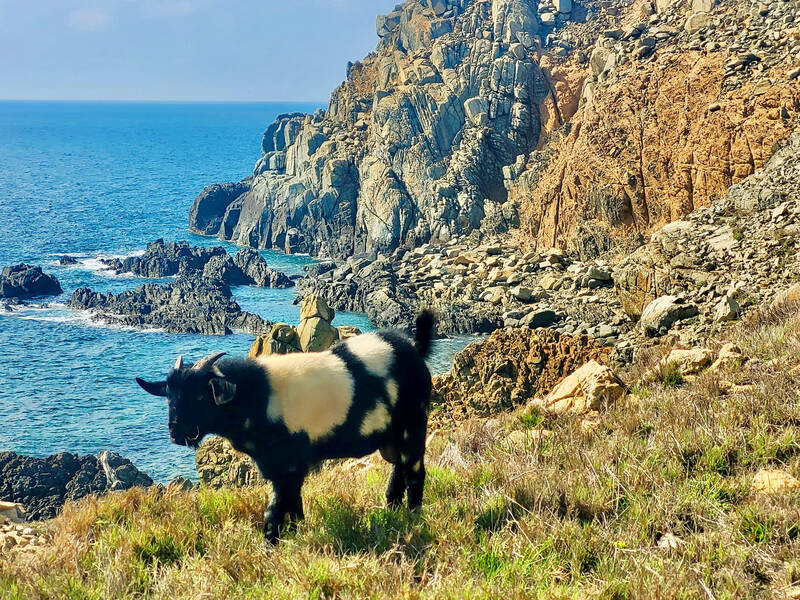
Photo: Tyler Cottenie
The harbor where the ferry lands appears quite new, as do the fire hall and coast guard buildings nearby. Ferry service used to be only three times a week but has now expanded to twice a day. Clearly there has been significant investment here.
I had arranged accommodation with a Mr. Liu (劉), who gave me a scooter ride to his home and showed me my room. The living room was a cluttered mess, the remainder of the interior was only partially painted and tiled, and the room itself was an aesthetic nightmare. Still, the blankets were clean, there was air conditioning and the price was right, at only NT$700 for a night and two meals.
He told me to make sure I made my way to “the store” (there is only one store on Huayu) before 6:30pm and his mother would have a simple congee dinner ready for me. With three hours to go and fantastic weather outside, I set out to explore the island on foot.
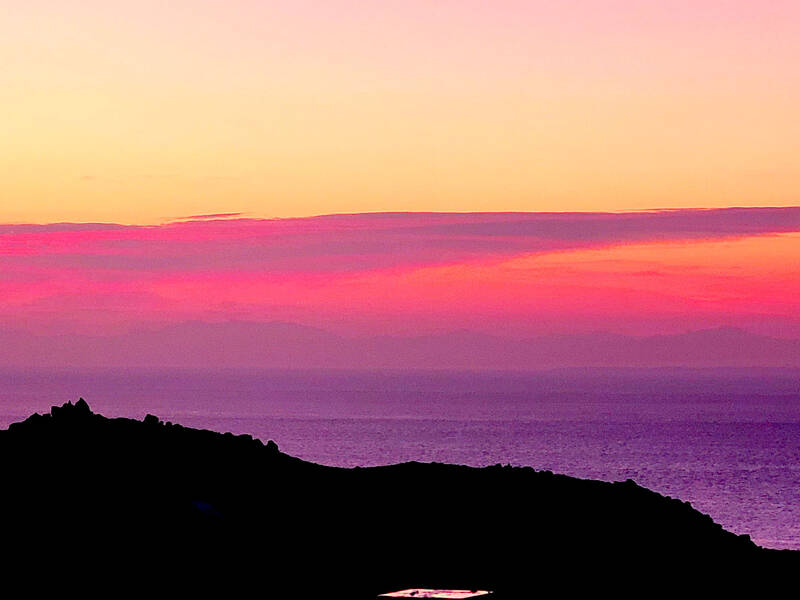
Photo: Tyler Cottenie
A VILLAGE IN DECLINE
The village itself is a maze of dead-end alleys spread among a mix of modern concrete buildings and traditional Penghu-style homes with tiled roofs and walls of coral stones. The majority sit empty, as most people with household registration here do not regularly live on the island.
Surprisingly, there is an active elementary school here. The quaint schoolyard sits above the village with a well-manicured lawn and a commanding view of the ocean. Only four students remain here, and they are outnumbered by the teachers.
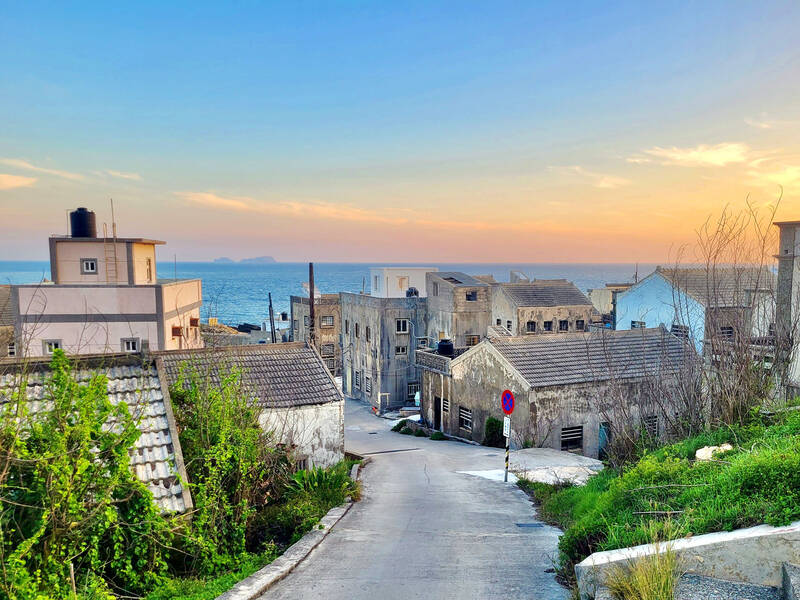
Photo: Tyler Cottenie
Heading back to the wharf, I passed by the lighthouse road junction, the desalination plant, the roaring generators and the concrete breakwater. I had decided to make my own trail along the coast to reach the lighthouse. The shore soon became impassable so I walked up the rocky slope to higher ground, where I could see the lighthouse in the distance, perched majestically in a green meadow.
Several friendly goats grazed among the rocks in front of me, and I began following the very obvious trail they had trodden into the hillside. After dropping down to the shore again and ascending the slope ahead, this time without a clear goat trail to follow (flip-flops were not the best choice of footwear), I made it to the lighthouse.
It is unmanned but well maintained, and with its high vantage point, is a must-see for any visitors to Huayu. After snapping some photos of the lighthouse and the crumbling former lighthouse keeper’s residence, I took the usual way back down to the wharf, a 10-minute walk along a good concrete road.
Next, I set out to explore what the locals call the “back mountain” (後山): the wide expanse of empty land behind the village. Encouraged by my recent off-trail success, I ignored the concrete road running uphill by the police station, and the second one by the elementary school, opting instead to follow the shore again.
THE BACK MOUNTAIN
Just behind the last house, I spent a few minutes locating an attraction that shows up on Google Maps as “Brothers Rock” (兄弟岩). Unlike most named rocks in Taiwan, this one isn’t shaped like its name at all; rather, someone has simply painted a crude outline of two faces on flat rock. Evidently, there is no better way to pass the time on Huayu.
As I continued forward, I was again forced to ascend to higher ground and, again, was rewarded for my trail blazing with spectacular views: crumbling cliffs and undulating green meadows accented by orange-tinged soil, all dwarfed by the immensity of the sea.
Eventually I got to the concrete road coming up from the elementary school, and the walk thereafter was an idyllic stroll through a green wonderland that bears a strong resemblance to that old wallpaper from Windows XP.
The two concrete roads leading out of the village both take separate paths all the way to the opposite coast, and there is a third road connecting the two in the middle of the island, where the only structures on the “back mountain” stand: two tiny temples, a columbarium, and a stone mound doubling as a shrine. Walk any way you like; you won’t get lost.
This landscape was an absolute joy to walk through, especially as sunset approached and the greens started to turn more and more golden. On a moonless night, the view of the stars from up here must be dazzling. So impressed was I by the view that I broke my cardinal rule and pulled myself out of bed at 5am the next morning to go back up for the sunrise.
As it turned out, this was well worth the effort. Forty minutes before sunrise, silhouetted against the brightening eastern horizon, were the mountains of Taiwan, over 160km away.
After a gorgeous sunrise, I headed down for a leisurely breakfast of steamed dumplings prepared by my hosts, and chatted with Mr. Liu’s father about how life has changed on the island since his childhood. When he was young, each grade at the school had over 20 students, and yet the village only had electricity for one or two hours a day.
Soon, the morning ferry came around the corner, and I had to say goodbye to my hosts and to this remote corner of the Taiwan Strait. It was time to walk over to the wharf and head back to the “big city” of Magong.
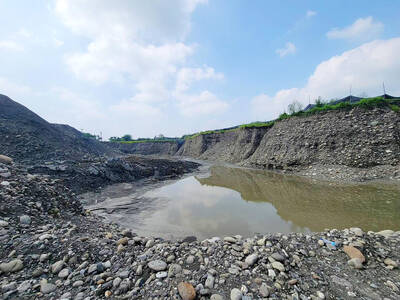
Last week the story of the giant illegal crater dug in Kaohsiung’s Meinong District (美濃) emerged into the public consciousness. The site was used for sand and gravel extraction, and then filled with construction waste. Locals referred to it sardonically as the “Meinong Grand Canyon,” according to media reports, because it was 2 hectares in length and 10 meters deep. The land involved included both state-owned and local farm land. Local media said that the site had generated NT$300 million in profits, against fines of a few million and the loss of some excavators. OFFICIAL CORRUPTION? The site had been seized
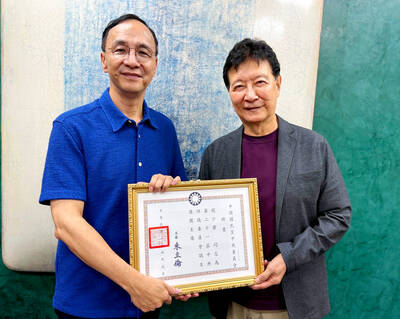
Next week, candidates will officially register to run for chair of the Chinese Nationalist Party (KMT). By the end of Friday, we will know who has registered for the Oct. 18 election. The number of declared candidates has been fluctuating daily. Some candidates registering may be disqualified, so the final list may be in flux for weeks. The list of likely candidates ranges from deep blue to deeper blue to deepest blue, bordering on red (pro-Chinese Communist Party, CCP). Unless current Chairman Eric Chu (朱立倫) can be convinced to run for re-election, the party looks likely to shift towards more hardline
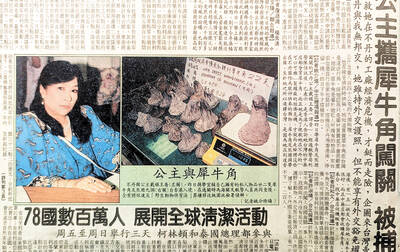
Sept. 15 to Sept. 21 A Bhutanese princess caught at Taoyuan Airport with 22 rhino horns — worth about NT$31 million today — might have been just another curious front-page story. But the Sept. 17, 1993 incident came at a sensitive moment. Taiwan, dubbed “Die-wan” by the British conservationist group Environmental Investigation Agency (EIA), was under international fire for being a major hub for rhino horn. Just 10 days earlier, US secretary of the interior Bruce Babbitt had recommended sanctions against Taiwan for its “failure to end its participation in rhinoceros horn trade.” Even though Taiwan had restricted imports since 1985 and enacted

The depressing numbers continue to pile up, like casualty lists after a lost battle. This week, after the government announced the 19th straight month of population decline, the Ministry of the Interior said that Taiwan is expected to lose 6.67 million workers in two waves of retirement over the next 15 years. According to the Ministry of Labor (MOL), Taiwan has a workforce of 11.6 million (as of July). The over-15 population was 20.244 million last year. EARLY RETIREMENT Early retirement is going to make these waves a tsunami. According to the Directorate General of Budget Accounting and Statistics (DGBAS), the